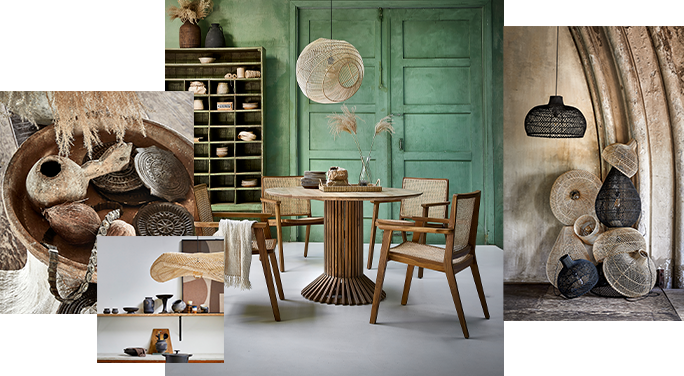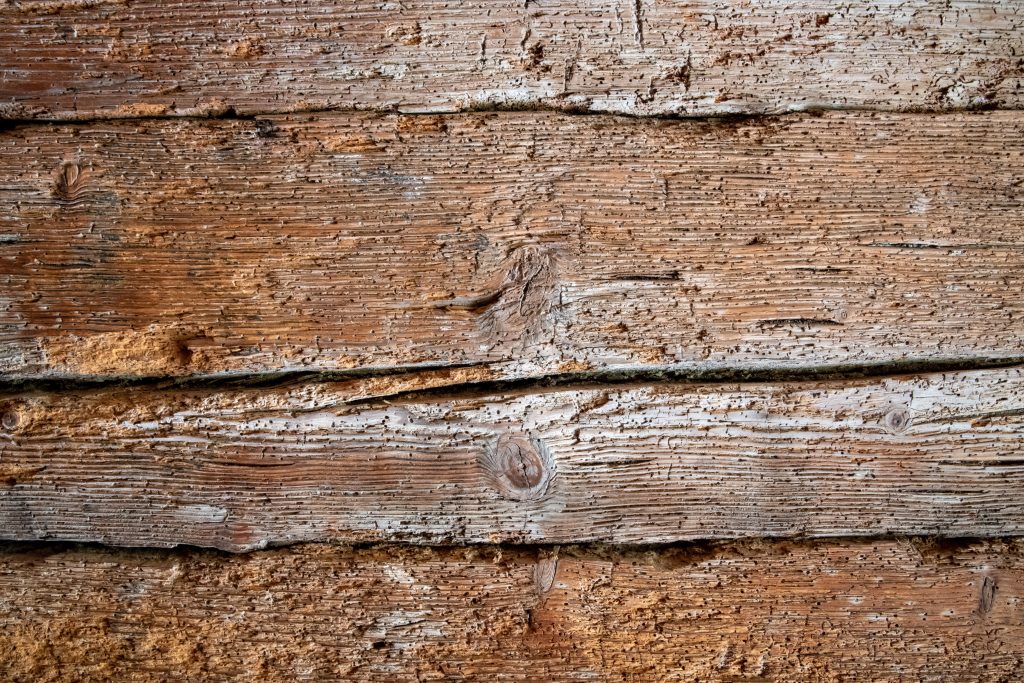
In this section, we’d like to share some ‘tips & tricks’ for your own business. Inspired by our CEO’s expertise in buying & restoring wooden furniture. Find out about an unwelcomed guest, you might sooner or later experience this if you deal with wooden furniture: woodwurm. It’s better we read up on this, recognize it, and know how to deal with it.
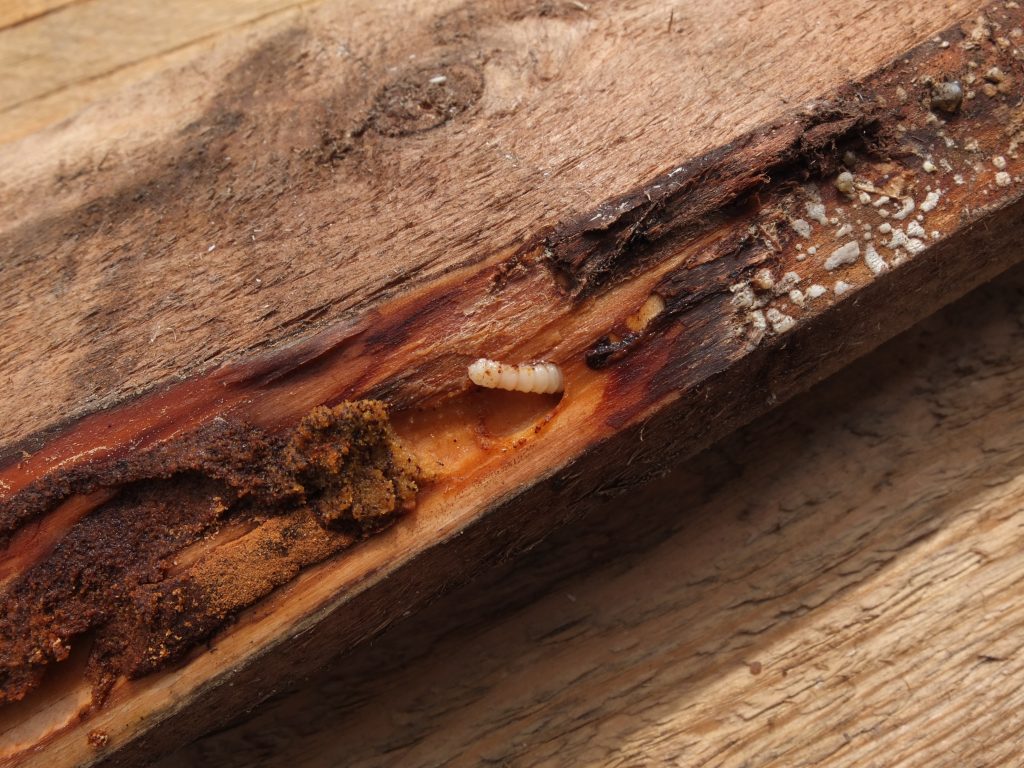
Larva
A woodworm is the wood-eating larva of many species of beetle. These larvae also give a generic description of the infestation of a wooden item.
Manifestation
Signs of woodworms usually consist of holes in the wooden item, with live infestations showing powder around the holes. The size of the holes varies, but they are typically 1 to 1.5 mm in diameter for the most common household species, although they can be much larger in the case of the house longhorn beetle.
Typically the adult beetles lay eggs on or just under the surface of a wooden item. The resulting grubs feed on the wooden item, causing structural and cosmetic damage. They then pupate and hatch as beetles that breed, lay eggs, and repeat the process, causing further damage.
As these beetles are accustomed to consuming decaying wood in forests, most grubs will prefer wooden items that contain a higher moisture content than typical household items.
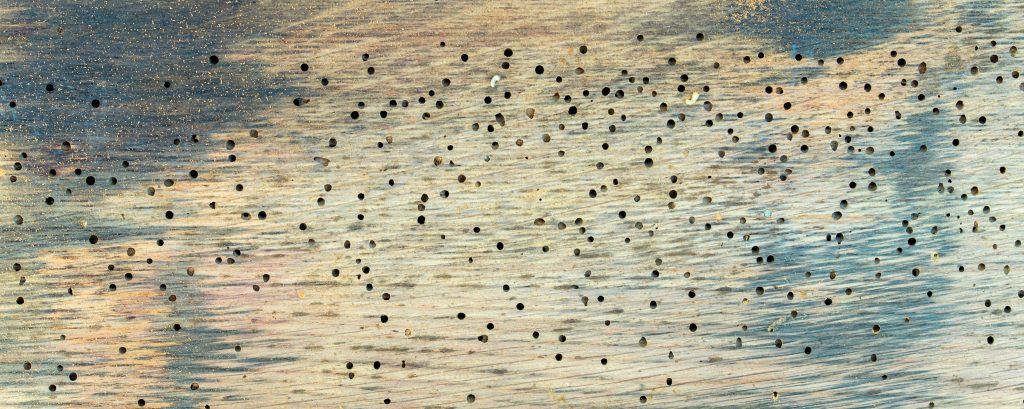
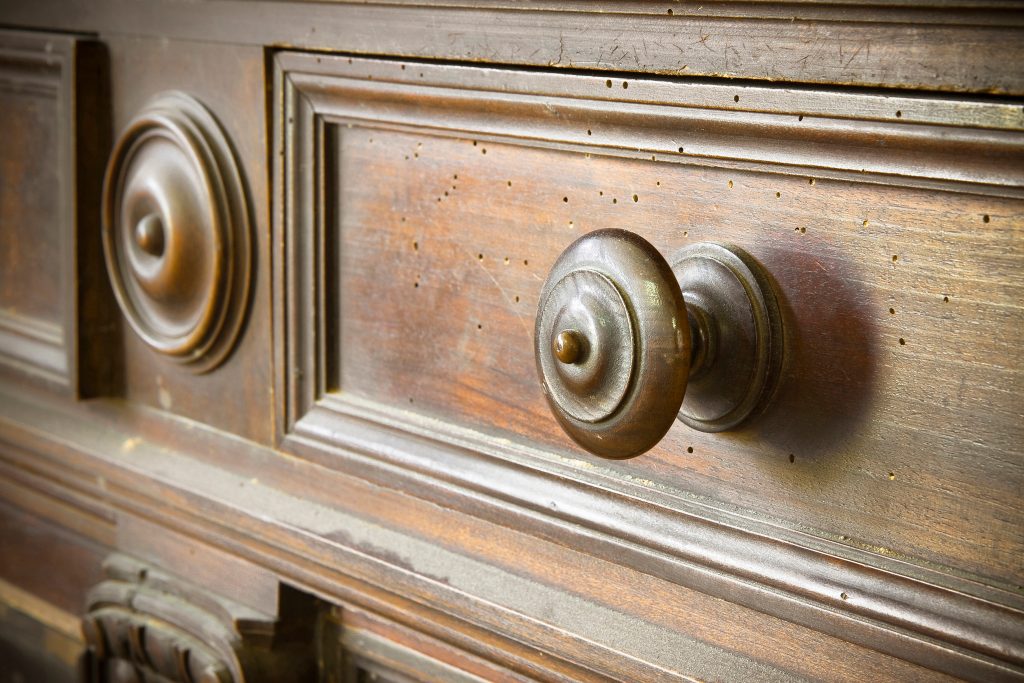
What causes woodworm?
Woodworm is caused by having moisture within the timber, when there is high moisture content within the timber, the female adult beetles during the summer months of the year will hatch their eggs. The woodworm beetle will then burrow through the timber and once finished, leave behind exit holes.
Wood-boring beetles look for untreated wood with a high moisture content to lay their eggs. Moist wood is soft, which makes it easier to bore into. Moist wood is also easier for woodworms to eat and digest.
Lifecycle
There is an incubation period where it will take two weeks for the eggs to hatch into a woodworm larvae. The lifecycle of the woodworm takes 2-5 years for it to journey its way through the wood and exit. Once the beetle has exited the wood, it will look for a mate to lay more eggs and once the beetle has mated, the lifecycle starts again and spreads onto pieces of timber.
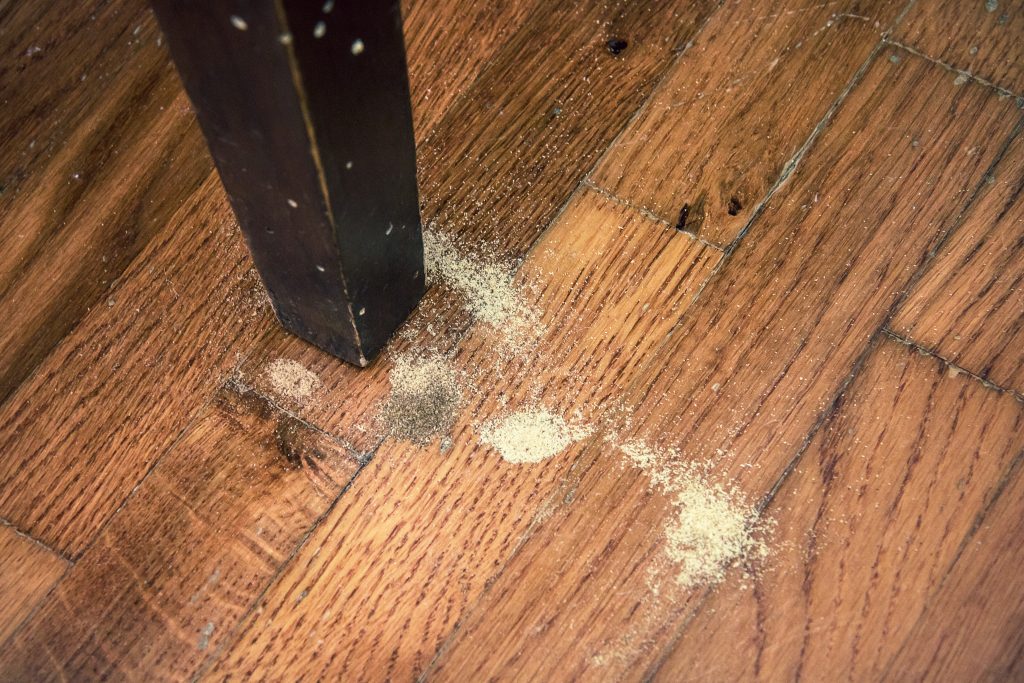
Signs of woodworm
Identifying a woodworm problem in its early stages is the most important stage in treating a woodworm problem. In many cases, you may not even be aware that you have a woodworm problem until the damage has been done and you can see the evidence that a wood-boring beetle has been at work. Left untreated woodworms will continue to feed on the timber resulting ultimately in the structural failure of the timber.
Exit holes in timber
When identifying if you have active woodworms in your object one very visual sign is the holes created by the woodworms as they exit the wood. The size of the holes varies depending on the species of woodworm but typically they are between 1 mm and 1,5 mm.
Presence of bore dust
An easy sign that you have a live woodworm infestation in your object is the presence of dust being left by the beetle when it chews its way through the wood. Woodworm dust is light in color and looks almost like very fine wood shavings.
Tunnels within the wood
Although this is an obvious sign that you have a woodworm problem it is also one of the least visible. The tunnels are created by the woodworm as it makes its way through the timber.
Damaged wood
Damaged wood could range from weakened floorboards to crumbling skirting boards. It is important not to confuse woodworm damage with the damage caused by dry rot or wet rot.
Actual beetles (dead or alive)
Dead woodworm beetles may be seen near timbers that are infected. Likewise, during the beetle ‘flight season’ between May and October, you could see live beetles as they emerge from the timbers. Although quite a broad time scale, this is when woodworms are most likely to leave the timber in an attempt to mate.
One of the first places you will notice them is near the proximity of your window and window sills. It is there you will be able to see the woodworm beetle crawling looking to find a mate.

How to prevent woodworm
Though it’s difficult to keep woodworms out completely, you can definitely do something.
Keeping all wood dry – The wetter the wood becomes, the easier it will be for larvae to bore through and live in it. Heating and ventilation will reduce the chance of moisture buildup and saturation of wood.
Buying furniture made from good quality hardwood – Hardwood is known for being most resistant to woodworm infestation due to its density and lack of nutrients for woodworm larvae to live off.
Sealing wood with varnish – Varnish makes it harder for wood-boring insects to penetrate a wooden surface. It is also toxic. Try to re-varnish or seal any surfaces that have worn away over time.
Carefully check for signs of woodworm when purchasing antique or second-hand furniture –
Removing infected wood from your home – If you find out that a piece of timber is infested, remove it at once if possible. Be sure to replace it with new timber that is suitably prepared with a protective finish and treated.
Treat the timber with a woodworm treatment – take the proactive step to prevent infestation and treat the timber with a woodworm killer.
Using flytraps – Flytraps can be used as a preventative strategy to catch and contain adult wood-boring beetles before they have a chance to mate.
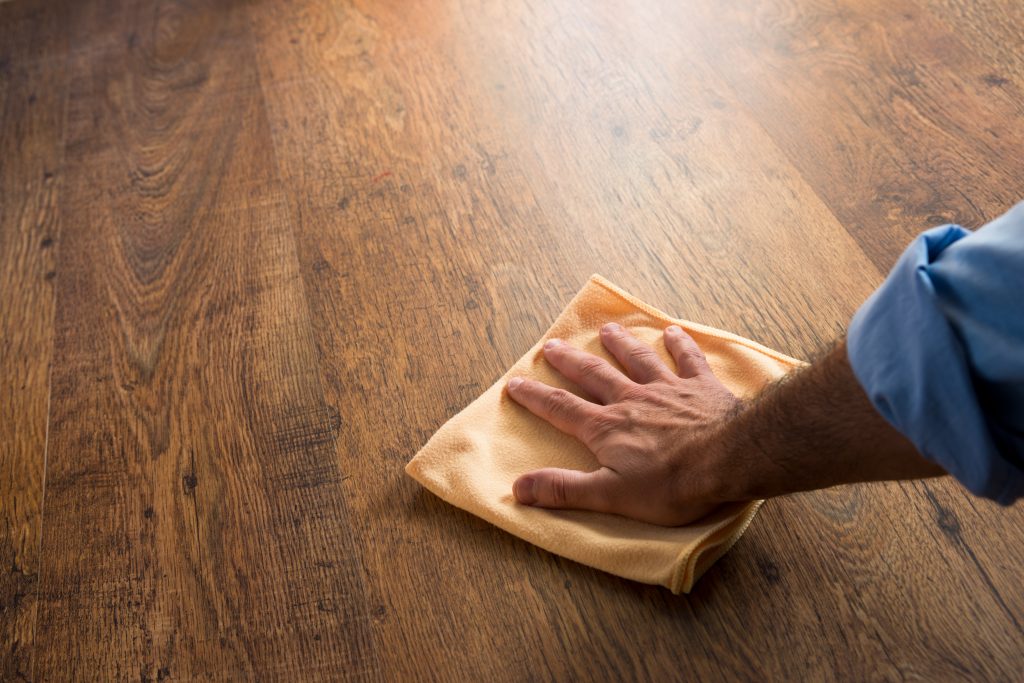
Treatment
Woodworm infestation is generally controlled with insecticides. Only active infestations require treatment, so it is important to ascertain whether an infestation is still active before treatment is carried out.
In principle, treating a woodworm infestation is fairly simple. So simple in fact, that countless remedies are available online. Some suggest using vinegar; others are ammonia solution or petroleum. Though these products may well solve your infestation problem, they will also leave your wood stained and odorous.
Freezing
Freezing treatments are quite effective but are generally useful for smaller items. This can be done without chemicals by popping the item in the freezer. Just wrap the object in a plastic bag and freeze it for a week. Then allow the object to completely thaw out. Then re-freeze for another week. The first freeze kills the adult larvae, and the first thaw prompts any eggs to hatch, which are then killed in the second freeze.
Chemical treatments
Chemical treatments should be localized: for example, if there is active woodworm in one beam, treat just the affected area, rather than treating every timber in the house.
The best woodworm treatment product:
• Contains an effective biocide active ingredient;
• Can penetrate deep into the material
• Is easily applicable;
• Does not give off unpleasant odors;
• Does not grease;
• Does not affect paints, pigments, coatings, glues, and hardware.
Local DIY stores will have a range of easy-to-use chemical woodworm killers designed to kill the insects on contact. For example;
- SoluGuard Woodworm Treatment is applied by brush or spray. This woodworm killer will effectively deal with all stages of the wood-boring beetle lifecycle.
- Permagard Woodworm Killer (Ready to use) is perfect for treating woodworms caused by Common Furniture beetles. It contains Permethrin, which is effective against all the life stages of wood-boring insects.
- Perfacs is a strong insecticide with Permethrin.
When using chemical woodworm killers yourself make sure there is good ventilation!
Our prevention methods
Please be sure that as a responsible company, we do whatever is necessary. One common mistake is to buy raw wood from an area that has a lot of rainfall or is moist by nature (jungle areas). We buy our wood from areas which are on higher ground and the soil is dry. All wood must have certifications of origin.
When we buy our wood we will buy only from dealers with a good reputation and are checked by institutions. They need to provide us with the right documentation.
The wood will then go into a kiln (huge oven) where it is properly dried for days and injected with chemicals.
Since the woodworm can settle deep into the planks we have added an extra step in this process. After manufacturing the items, we place them in our own air-tight container and again use special bottles of gas to kill them.
The final step is inside the container. After closing the doors of the container, Indian customs are inserting as well a gas. During the 4-5 weeks on a ship towards our warehouse, this keeps on working.
Does that mean that we guarantee 100% security against woodworms… unfortunately not. We do more than any other company for prevention but nature is a strong opponent. We minimize the risk of woodworms and with this article, we hope to have informed you properly.


